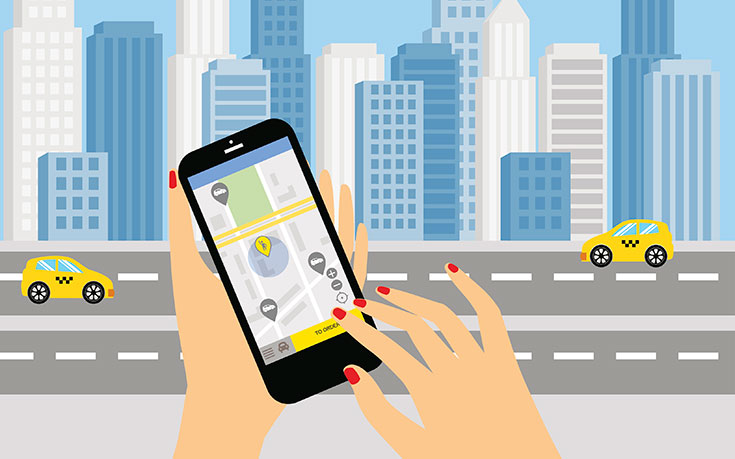A major benefit of car-sharing and ride-hailing is that it’s becoming easier for those without cars to get around and for households to reduce the number of cars they own, or eliminate car ownership altogether. Now, there’s a new benefit emerging -- the chance for people, both drivers and riders, to experience an electric car.
As ride-sharing continues to influence how we get from point A to point B in our communities, leaders in this space, like Lyft, could help accelerate our transition to cleaner vehicles as they work to meet their climate goals and reduce their carbon footprint. Lyft’s Express Drive Rental Car Sharing Program allows contracted drivers in San Diego, Los Angeles, and San Francisco to rent an electric car, currently those manufactured by GM, for a short term basis. This is part of Lyft’s recently announced effort to provide 1 billion automated electric car rides by 2025.
The other major ride-hailing company Uber has also launched an electric car initiative starting in Portland, Oregon to reach its goal of electrifying 10 percent of its fleet by 2019.
BlueLA and BlueIndy are the very first EV-car sharing services of their kind by allowing everyone to have 24/7 access to a network of affordable shared electric vehicles placed strategically in low-income neighborhoods. Other car-sharing companies charge rates that can be as high as $80 - $100 per day, making personal EV transportation out of reach for the communities who suffer hardest both economically and from poor air quality due to living in neighborhoods close to polluting factories and freeways.
All-electric car ride-sharing platform, WaiveCar, has partnered with electric car manufacturers, including GM and Hyundai, to offer free EV rides starting in Santa Monica, California. Zipcar has over 11,000 cars available to over 730,000 members, and their hybrid cars have been popular with their members since 2003 when they introduced the Toyota RAV4 EV, since adding Chevy Volts and Honda Fit EVs.
These programs and initiatives are spreading across ride-hailing and car-sharing programs, which will expose more of the public to the benefits of driving electric. Getting people inside an EV is the first essential step to making the switch from conventional gasoline-powered cars to electric vehicles. We know how powerful it is to get “butts in seats” of EVs and otherwise spread the word that EVs have so many benefits, including clean air, a fun ride, and cheaper fueling. At the recent 7th annual National Drive Electric Week in mid September, there were 276 EV promotion events with more than 110,000 people in attendance, more than 8,000 EV test rides, and nearly 500 unique media hits -- exposing EVs to millions of people. We don’t think it’s a coincidence that September was the best-selling month in 2017 to date for EVs in the U.S. in terms of both raw numbers and the percentage of total U.S. auto sales.
Is it practical for rideshare drivers to drive electric cars?
Often, yes, given the location. The mileage of today’s fully electric vehicles ranges from about 70 to 265 miles, depending on the model. The average car-share or ride-share trip is only about five to ten miles, with requests for rides that are 20, 30 and 50 + miles pretty rare. During busier times, a driver might do two to three trips in an hour, probably fewer than 10 - 25 miles driven in an hour. And, while drivers are waiting for the next ride, finding a DC fast charger or even a slower “level 2” EV charging station to “charge up” can be a good idea. Apps from companies like Plugshare and ChargePoint provide information about the public charging stations in your area, including which ones are available at any given moment. For plug-in hybrids that have a backup gasoline engine, there is no mileage “range anxiety” at all.
For drivers of electric vehicles, gas costs can potentially be zero -- saving hundreds or even thousands of dollars annually, on top of the much lower maintenance costs. Fully electric cars have a lot fewer moving parts than conventional gasoline-powered cars because there’s no oil, no radiator or transmission, just the tires and brakes that need occasional replacements. In fact, NerdWallet did a study comparing five year ownership costs of EVs and hybrids versus conventional vehicles and found that hands down, EVs are the cheaper cars to own -even before rebates and incentives.
When it comes to ride-sharing, car-sharing, or any kind of driving, EVs are always better for the environment than conventional cars. And as Sierra Club’s online EV Guide shows, if you click on a car and provide your zip code, EVs are usually 30-50% lower in greenhouse gas emissions (varying depending on your region) compared to conventional vehicles, even factoring in the emissions from the electricity used to power EVs. However, the jury is still out whether the rise of ride-hailing will have a positive or negative environmental impact. As we discussed in a previous blog post here, any positive environmental benefits of ride-hailing and ride-sharing will need to incorporate broad efforts to switch to EVs, reduce overall vehicle miles traveled, and to dovetail with pro-transit programs.
Driving or riding in an EV can be cheaper and cleaner. Now, we need these EV ride-hailing and car-sharing pilot programs to be expanded to more cities to spread the EV love -and to integrate effectively with transit choices. Also, just like we can often select a cheaper and cleaner Uber or Lyft ride to be in carpool mode, wouldn’t it be nice to have an EV (or at least an EV/hybrid) option to choose, as well?
